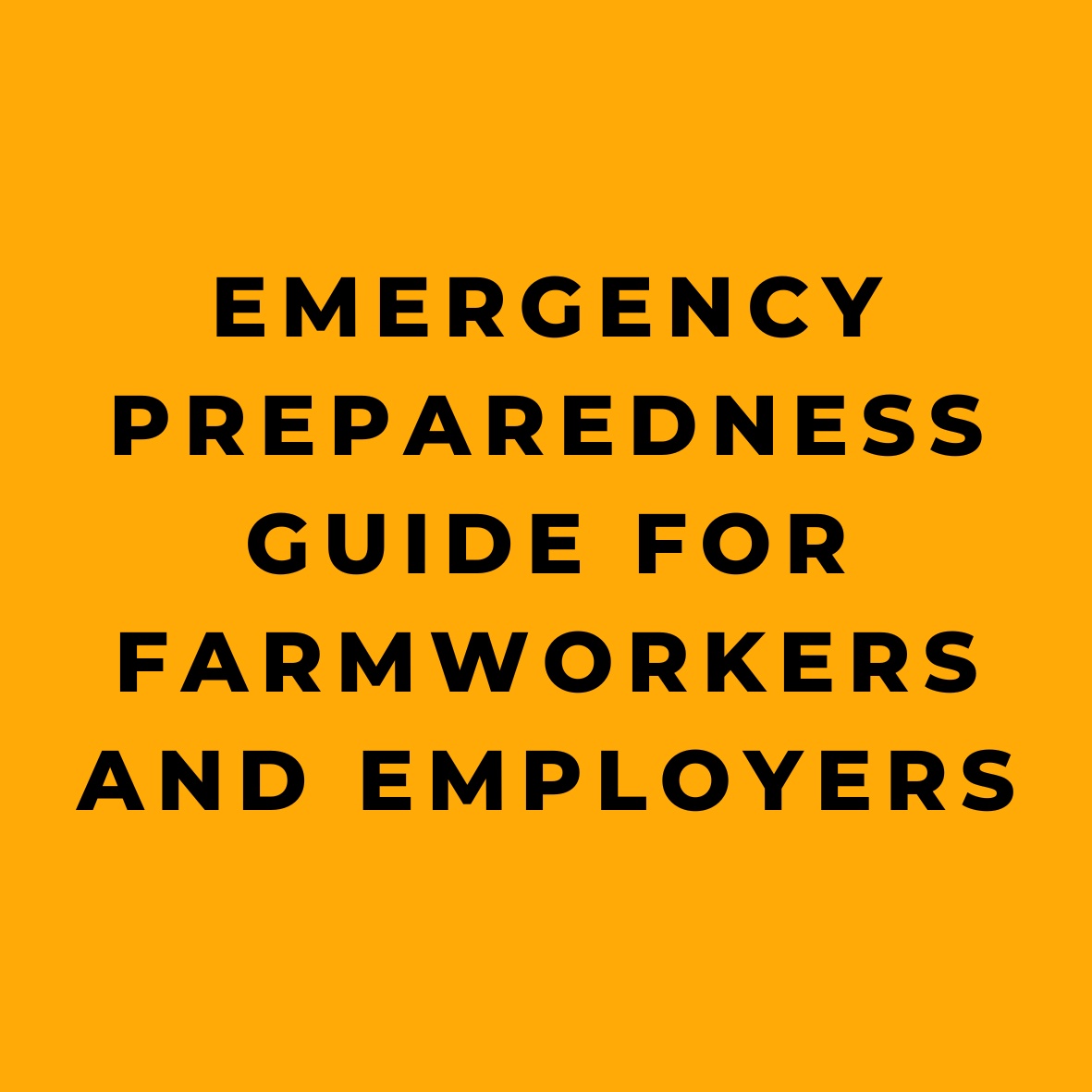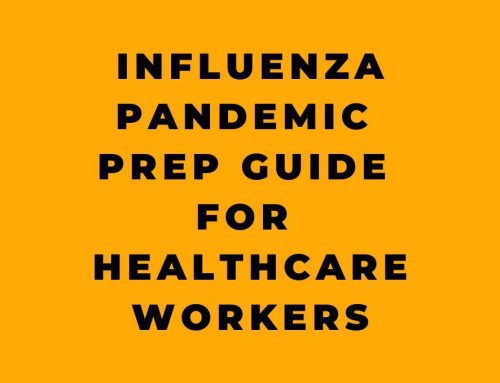Farms, like any other workplace, can face unexpected emergencies and disasters. These can be natural or man-made events, and to lessen their impact, it’s essential for employers and supervisors to develop and exercise an emergency action plan. This way, workers are prepared to react to and handle emergencies and disasters before they even occur.
Emergency Action Plan
An Emergency Action Plan (EAP) is a plan that identifies and organizes employer and worker responsibilities in preparation for, and when responding to, a workplace emergency or disaster. Having a well-prepared plan, with the employer’s support and workers’ participation, is crucial for an orderly evacuation and quick response. Developing and implementing an EAP can reduce confusion, decrease injuries, and limit property damage during and after a disaster or emergency.
Agricultural Emergencies
Agricultural emergencies can be either natural or man-made:
Natural emergencies include tornadoes, hurricanes, wildfires, floods, severe winter storms, severe dust storms, lightning strikes, and earthquakes.
Man-made emergencies include wildfires, explosions or fires, animal handling incidents, grain entrapments, power failures, incidents involving rotating and moving equipment (Power take-off shafts, screw conveyors/augers), chemical releases or spills, amputations, vehicle incidents (turnovers, rollovers), workplace violence, and accidental poisoning.
How to Prepare an Emergency Action Plan
Preparing an Emergency Action Plan involves creating a well-documented plan that ensures emergency response procedures are established for before, during, and after an emergency. The plan should be comprehensive enough to address all types of emergencies or disasters that could possibly occur on the farm. While smaller organizations may not need a written plan and can communicate it orally, it’s always a good practice to have a written emergency action plan. The best EAPs are customized for your specific farm operations and require time, thought, and planning. Make sure to include workers and family members in the emergency preparedness planning process to help identify emergency or disaster situations that can impact the farm. The EAP should be revised when shortcomings are discovered and reviewed at least annually. Employers should review the EAP with each worker under various circumstances, such as when a new worker is hired, when the plan is developed, or when the worker’s responsibilities change under the plan.
A well-rounded EAP should include:
- Emergency escape procedures and routes.
- Procedures to account for workers.
- Procedures for workers who remain on site after the alarm sounds.
- Duties for workers designated to perform rescue and medical functions.
- The preferred means for reporting emergencies.
- Contact(s) for further information or explanation of duties under the plan.
- Possible emergency events, incidents, and life-threatening situations.
- Emergency escape routes, shelter-in-place locations, and rally points.
- Floor plans and workplace maps.
- A chain of command to prevent confusion and coordinate efforts.
- Emergency communication equipment, such as two-way radios or a public address system for workers and first responder notification.
- Special equipment needed for emergencies and disaster response.
- Workers’ next-of-kin emergency phone numbers and contacts.
- Farm inventory, including location of livestock, electrical shut-off locations, buildings and structures, and farm machinery/equipment
- Farm inventory should also include make and model numbers of machinery and equipment.
- A list of necessary supplies, such as sandbags, fire extinguishers, gas-powered generators, and hand tools.
- If needed, identify primary and secondary areas to relocate farm assets and workers.
- Note the location of nearby buildings that can be used as a command post or logistical assistance area.
Employers should make workers aware of the potential man-made and natural workplace emergency situations that could impact the farm.
Preplanning with First Responders
Preplanning with first responders is crucial. Implementing and exercising an emergency action plan should involve working with your local first responders or fire department. Invite them to walk your farm to gather and record important information that could be critical for making life-saving decisions during incidents like grain bin entrapments, fires, or natural disasters. Pre-planning allows first responders to become familiar with the farm’s physical layout (including buildings and structures like grain bins), hazardous chemicals and equipment, employee locations during emergencies, important contacts and their information, utility control, evacuation plans, security measures, and emergency first responder limitations.
Training
Worker training is an essential part of a good emergency preparedness plan. Training may vary from operation to operation, with some employers setting up formal classroom-style training for workers and others working one-on-one with workers. If workers are expected to perform adequately in an emergency, provision must be made for the training of both individuals and teams. Regardless of the training approach, it should be conducted periodically or as needed to maintain workplace preparedness. Additionally, training and training materials should be provided to workers in a language they understand, as some workers may not speak English.
Workers should be trained in the following areas:
- Evacuation plans
- Alarm systems
- Reporting procedures for personnel
- Shutdown procedures
- Types of potential emergencies
Farm Exercises and Drills
Farm exercises and drills are essential for testing the effectiveness of the plan. It’s difficult to predict all potential problems without conducting exercises and drills. These should be performed annually or as needed to practice critical portions of the emergency response plan, such as evacuation. After each drill, exercise, or emergency incident, a meeting or review should be held to evaluate what happened, why it happened, and how it can be done better by the employer and worker(s) in the future. Post exercise and drill meetings or reviews will identify areas requiring improvements.
Medical Service and First Aid
Medical service and first aid are important aspects of emergency preparedness. In the absence of an infirmary, clinic, or hospital in near proximity to the workplace, at least one person should be adequately trained to render first aid. It’s also essential to have basic first-aid supplies available. Emergency phone numbers should be posted in visible places, inside farm vehicles, and on telephones. For more information on first aid, see OSHA’s Best Practices Guide: Fundamentals of a Workplace First-Aid Program.
Workplace Emergency Response Team
A farm’s most valuable asset during the first few minutes of an emergency is a well-trained and disciplined emergency response team. A farm emergency response may be provided by an outside organization, such as the fire department, or in some cases, the farm’s internal emergency response team. Workers who are members of the emergency response team should be thoroughly trained and physically capable of performing emergency response duties and responsibilities. They should also be knowledgeable about the hazards found on the farm.
Team members should know when to take actions themselves or to wait on outside assistance when an emergency or disaster is too large to handle (i.e., the fire department). One or more members on the team should be trained in:
- How and when to use various types of fire extinguishers
- First aid, including cardiopulmonary resuscitation (CPR)
- Shutdown procedures
- Chemical spill control procedures
- Emergency rescue procedures
Employers should alert contractors about the hazards found in the workplace, particularly regarding the work they are to perform. In any emergency situation, contractors should be able to take appropriate action as part of the EAP.
Workers Rights’
Workers have the right to:
- Working conditions that do not pose a risk of serious harm.
- Receive information and training (in a language and vocabulary the worker understands) about workplace hazards, methods to prevent them, and the OSHA standards that apply to their workplace. Review records of work-related injuries and illnesses.
- File a complaint asking OSHA to inspect their workplace if they believe there is a serious hazard or that their employer is not following OSHA’s rules. OSHA will keep all identities confidential.
- Exercise their rights under the law without retaliation, including reporting an injury or raising health and safety concerns with their employer or OSHA. If a worker has been retaliated against for using their rights, they must file a complaint with OSHA as soon as possible, but no later than 30 days.
Conclusion
Proper emergency preparedness is crucial for the safety of farmworkers and the preservation of the farm’s assets. Developing a comprehensive Emergency Action Plan, involving first responders, providing adequate training, and conducting regular drills are all essential steps in ensuring a swift and effective response during emergencies. By fostering a culture of safety and open communication, employers and farmworkers can work together to minimize the impact of both natural and man-made disasters on their workplace, ultimately protecting lives, property, and the continuity of the farm’s operations.
For more information on ATV safety and other issues affecting farmworkers, visit OSHA’s Safety and Health Topics Agricultural Operations website at the following web page:
References:










